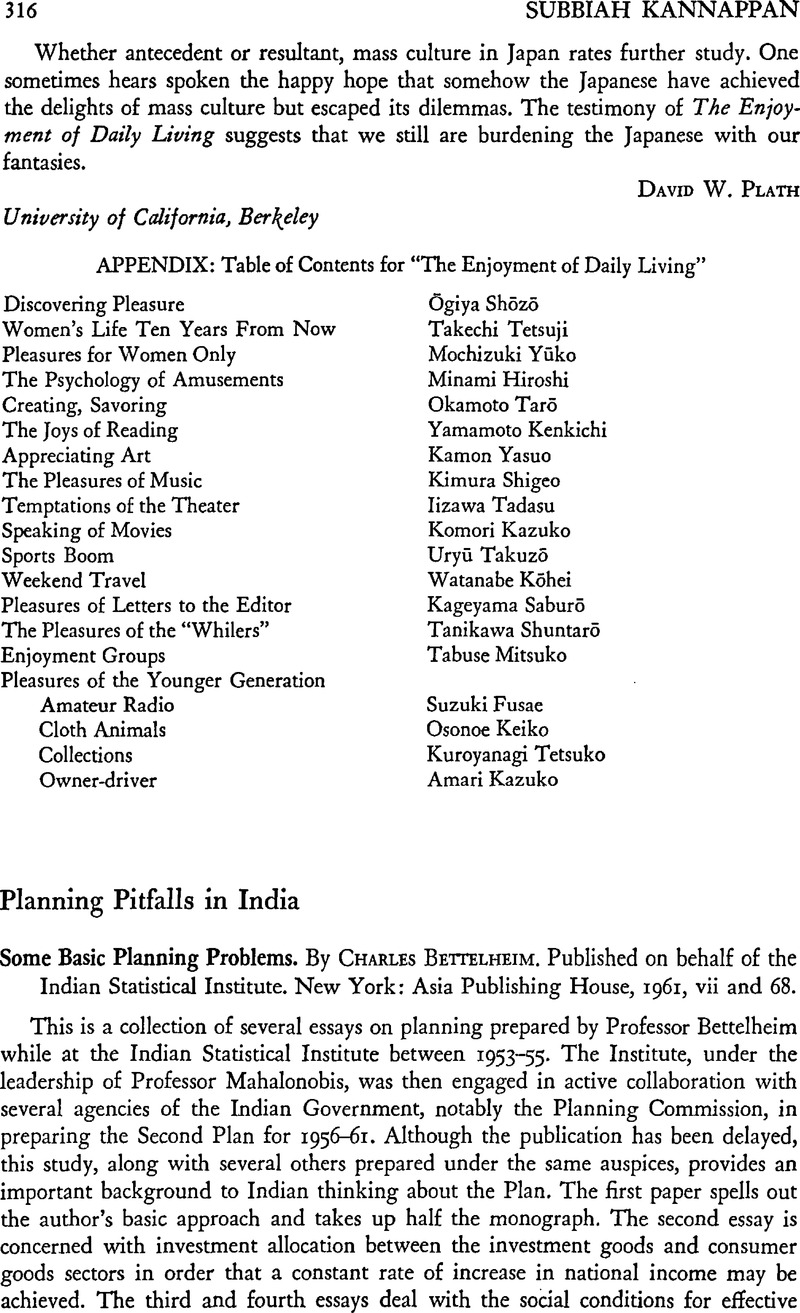No CrossRef data available.
Published online by Cambridge University Press: 23 March 2011

1 Bettelheim indicates this clearly when he says (p. 23): “Such a proportion of investment in the large scale industries and mines is a minimum for an industrialization plan.” Cf. also the illuminating discussion of the Mahalanobis model which provided the basis for the Indian Second Five Year Plan in Malenbaum, Wilfred, Prospects for Indian Development, George Allen and Unwin Ltd., 1962, pp. 86–91.Google Scholar
2 Bauer, Peter T., Indian Economic Policy and Development, New York: Frederick A. Praeger, 1961, pp. 50ff.Google Scholar
3 See Harberger, A. C., “Cost-Benefit Analysis and Economic Growth,” Economic Weekly, 02 1962, pp. 207–222.Google Scholar
4 “India in the 1960's Faces Economic and Political Crisis,” The Brookings Bulletin, I (Fall 1962)Google Scholar. The report highlights the findings of Professor John P. Lewis' Quiet Crisis in India: Economic Development and American Policy, to be published in December, 1962.